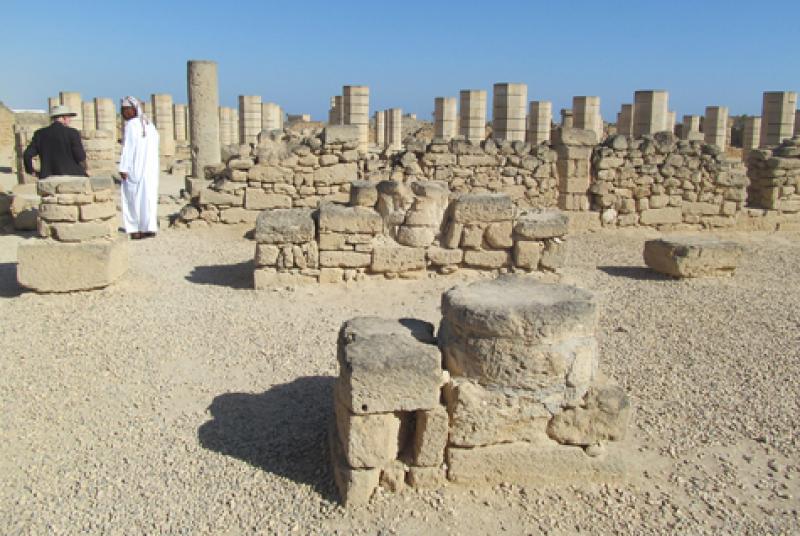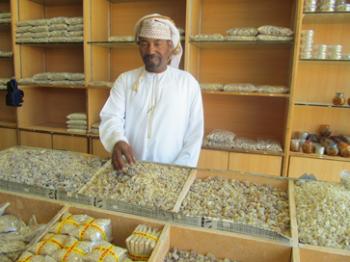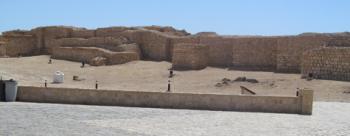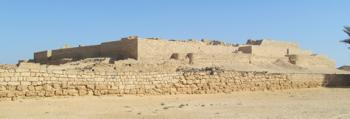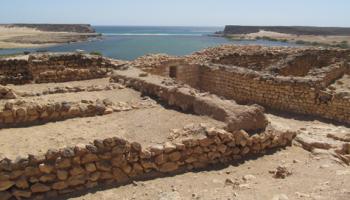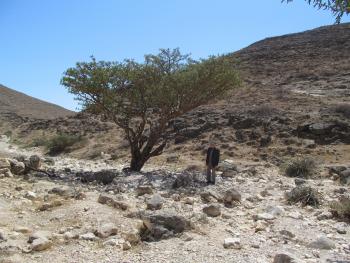On the frankincense route in Oman
This item appears on page 54 of the November 2018 issue.
The city of Salalah lies on the southern coast of Oman beside the Arabian Sea, about 600 miles southwest of Muscat, the country's capital. It is in this area of Oman that the frankincense trade flourished for hundreds of years, beginning perhaps as early as the third millennium BC.
From ports along Oman's southern coast, frankincense traveled by land and sea not only to other parts of Oman and the Arabian Peninsula but east to China and India and north and west to Mesopotamia, Egypt and the Mediterranean coast.
Frankincense
What is this product that brought wealth to this part of the Arabian Peninsula? Frankincense is an aromatic resin that comes from trees of the genus Boswellia, especially Boswellia sacra, found in the semiarid region around Salalah and in only a few other places on Earth.
In antiquity, frankincense was prized as a precious commodity. (Supposedly, the Three Wise Men carried gold, frankincense and myrrh — another aromatic resin — as gifts to the newborn Christ Child.) Frankincense was burned in ancient Egyptian temples as well as in early and medieval-era Christian churches. Incense is still used in Catholic and Orthodox churches today.
Pre-Islamic Sumhuram
Twenty miles east of Salalah lie the ruins of Sumhuram, a port city made prosperous through frankincense. Sumhuram's life as a frankincense trade city was long, from about the 4th century BC to the 5th century AD, until its port gradually became blocked by a sandbar and trade waned.
Excavations are ongoing and much has been uncovered, giving an excellent idea of the plan of a pre-Islamic port city.
Sumhuram of 2,000 years ago was a relatively small city of about 2½ acres, enclosed within sturdy limestone walls approximately 30 feet high and 7 to 10 feet thick. Adding to the impression of its impregnability that visitors must have had upon approaching the city was a monumental gate. Meant as a defensive entry, it twisted and turned leading into the city proper.
City layout
To the right of the entry lie the ruins of an imposing building that is thought to have housed the city's water supply, with a deep well in its central courtyard. Around this reservoir was the city's residential area, where small, two-story houses stood cheek by jowl. Business activities occupied the ground floor, with living quarters above.
In the southeastern part of Sumhuram was the marketplace, hemmed in by long rectangular rooms used to store frankincense and other goods. Next to the marketplace was a sea gate through which goods passed to be loaded or unloaded onto vessels in the port.
At the opposite end of the city, beyond the residential quarter, was one of Sumhuram's most impressive buildings: the main temple dedicated to Sin, the moon god. An ablution room preceded the sanctuary, where the cult of the god was observed. You can still see two rows of columns that divided the sanctuary into three naves.
Islamic Al Baleed
It is surmised that the decline of Sumhuram precipitated the rise of a second ancient port city, one that my husband, Paul, and I visited. This port city was Al Baleed, located at the edge of Salalah.
Although the region around Al Baleed has roots reaching back to the Neolithic Age (around 8000 to 3000 BC), the city — called Zafar — rose to prominence in the late Iron Age, about the 5th to 6th centuries AD.
Al Baleed's heyday was between the 8th and 10th centuries AD, when it carried on a brisk trade in frankincense and other commodities with China, Southeast Asia, India, East Africa and beyond. This trade continued well beyond the 10th century.
Marco Polo described the city in his "Travels of Marco Polo" (c. AD 1300), although he probably never visited it. Ibn Battuta, the intrepid 14th-century Moroccan traveler, visited not once but twice — in 1327 and 1345.
However, around AD 1500 the city began to succumb to both climate change and to the growing Portuguese presence in the southern Arabian Peninsula. By 1700, Al Baleed had become a shadow of its former self.
Thriving port city
Al Baleed, like Sumhuram, was a port city, although it was much larger than Sumhuram. It was encircled by stone walls studded with 30 towers. There were numerous breakwaters as well as jetties for unloading cargo. Within the city were more than 50 small mosques, testimony to the city's size.
Two special highlights still visible in Al Baleed are Al Husn, an immense citadel/palace dating from the mid-10th century AD, and a large mosque adjacent. Built in the first half of the 9th century, the mosque had seven doorways and a roof supported by 144 massive pillars. It served as Al Baleed's principal mosque.
On-site museum
There is a third highlight, the Museum of Frankincense Land, displaying artifacts from Sumhuram, Al Baleed and Ash Shisr/Ubar, the inland caravan oasis 100 miles northeast of Salalah. These three are UNESCO World Heritage Sites together with Wadi Dawkah, where frankincense trees still thrive.
Al Baleed is so large that guides use golf carts to take visitors around, making a stop for a short stroll through the ruins of the multi-columned main mosque.
Taking home frankincense
After visiting Sumhuram and Al Baleed, we wanted to buy some frankincense for ourselves.
The best-quality frankincense happens to come, not surprisingly, from around Salalah from trees growing within a few miles of the two archaeological sites we had visited. Salalah's souk displays and sells many varieties of frankincense, even some imported from Somalia.
To our purchase of frankincense, we added a traditional-style clay incense burner plus charcoal pellets to make the ensemble complete.
If you go…
Original World (San Rafael, CA; 888/367-6147 or 415/381-5861, www.originalworld.com) arranged a near-perfect, 14-night private tour for us in February 2018.
Some of the highlights included visiting Sultan Qaboos Grand Mosque in Muscat; spending a night in a luxurious tent at the 1000 Nights Camp, set among the wind-swept dunes of the Sharqiya Sands desert; searching for antique silver tribal jewelry in Salalah's souk; exploring the fortresses of Nizwa and Bahla; overnighting at the elegant Anantara Al Jabal Al Akhdar Resort on a mountain overlooking a canyon; visiting the valleys where the frankincense trees grow, and bargaining with Bedouin women for their colorful, hand-embroidered cushion covers while sipping sugary tea.
These were just a few of the many surprises that Oman offered us. My only lament — why had it taken us so long to "discover" Oman?

